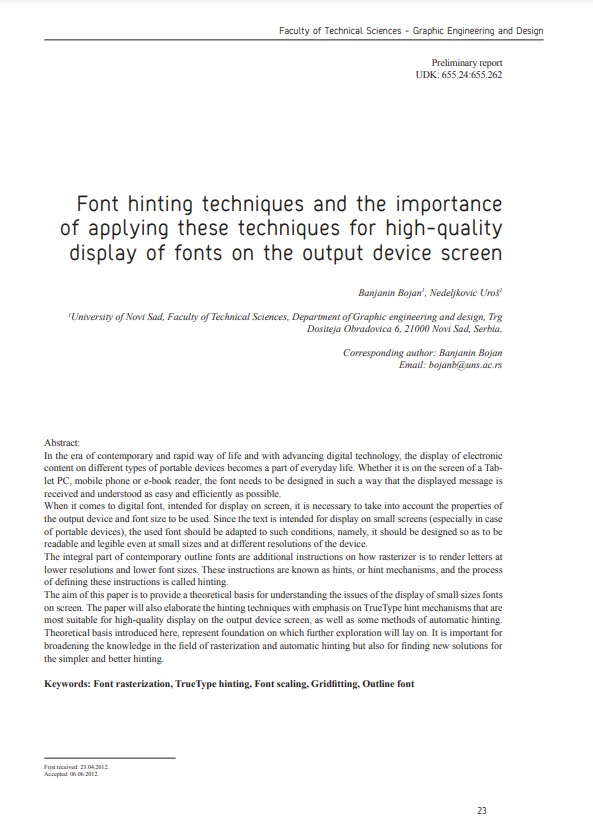Font hinting techniques and the importance of applying these techniques for high-quality display of fonts on the output device screen

Published 2023-10-01
abstract views: 186 // Full text article (PDF): 321
Keywords
- Font rasterization,
- TrueType hinting,
- Font scaling,
- Gridfitting,
- Outline font
How to Cite
Copyright (c) 2012 © 2012 Authors. Published by the University of Novi Sad, Faculty of Technical Sciences, Department of Graphic Engineering and Design. This article is an open access article distributed under the terms and conditions of the Creative Commons Attribution license 3.0 Serbia.

This work is licensed under a Creative Commons Attribution 3.0 Unported License.
Abstract
-
In the era of contemporary and rapid way of life and with advancing digital technology, the display of electronic content on different types of portable devices becomes a part of everyday life. Whether it is on the screen of a Tablet PC, mobile phone or e-book reader, the font needs to be designed in such a way that the displayed message is received and understood as easy and efficiently as possible. When it comes to digital font, intended for display on screen, it is necessary to take into account the properties of the output device and font size to be used. Since the text is intended for display on small screens (especially in case of portable devices), the used font should be adapted to such conditions, namely, it should be designed so as to be readable and legible even at small sizes and at different resolutions of the device. The integral part of contemporary outline fonts are additional instructions on how rasterizer is to render letters at lower resolutions and lower font sizes. These instructions are known as hints, or hint mechanisms, and the process of defining these instructions is called hinting. The aim of this paper is to provide a theoretical basis for understanding the issues of the display of small sizes fonts on screen. The paper will also elaborate the hinting techniques with emphasis on TrueType hint mechanisms that are most suitable for high-quality display on the output device screen, as well as some methods of automatic hinting. Theoretical basis introduced here, represent foundation on which further exploration will lay on. It is important for broadening the knowledge in the field of rasterization and automatic hinting but also for finding new solutions for the simpler and better hinting.

